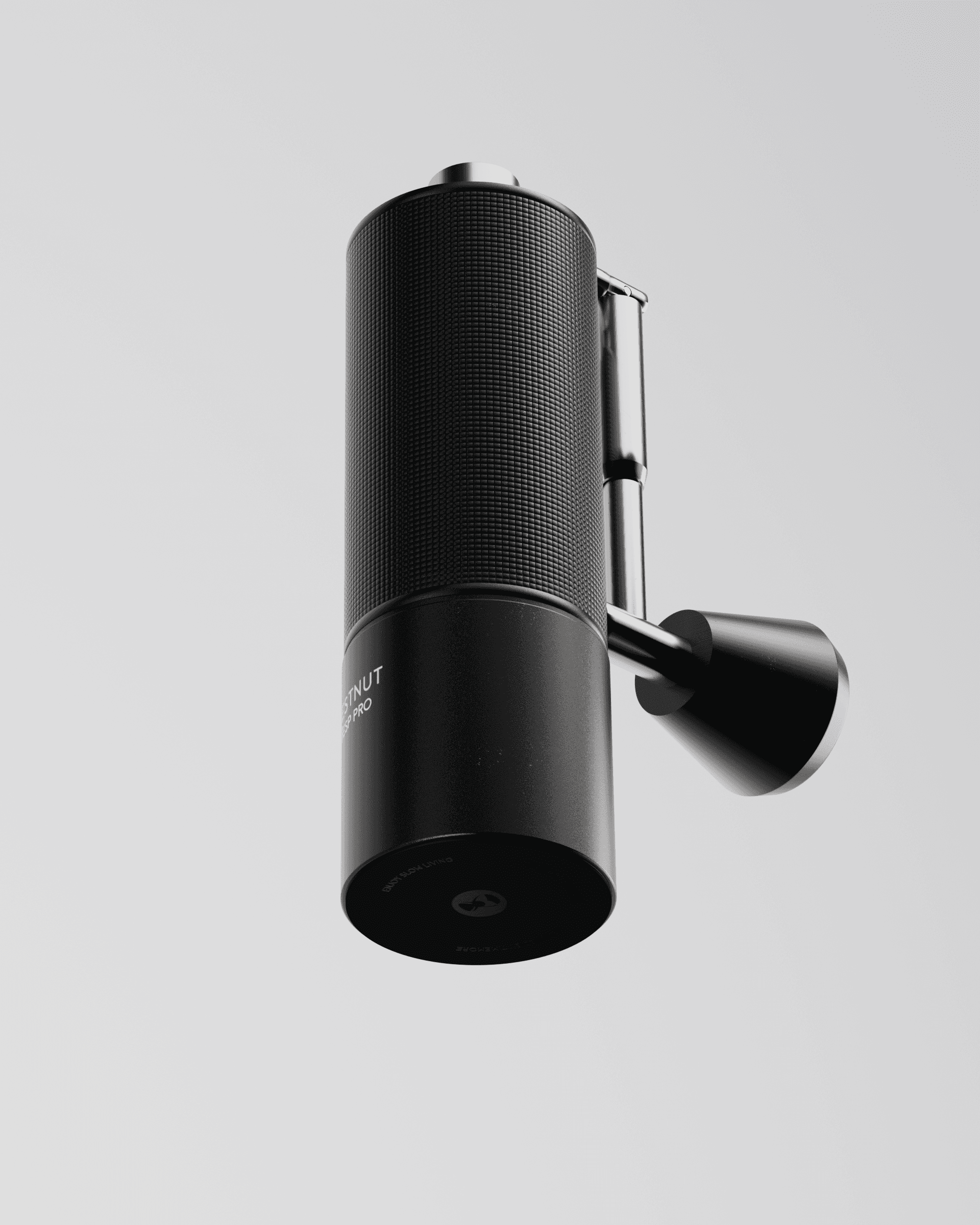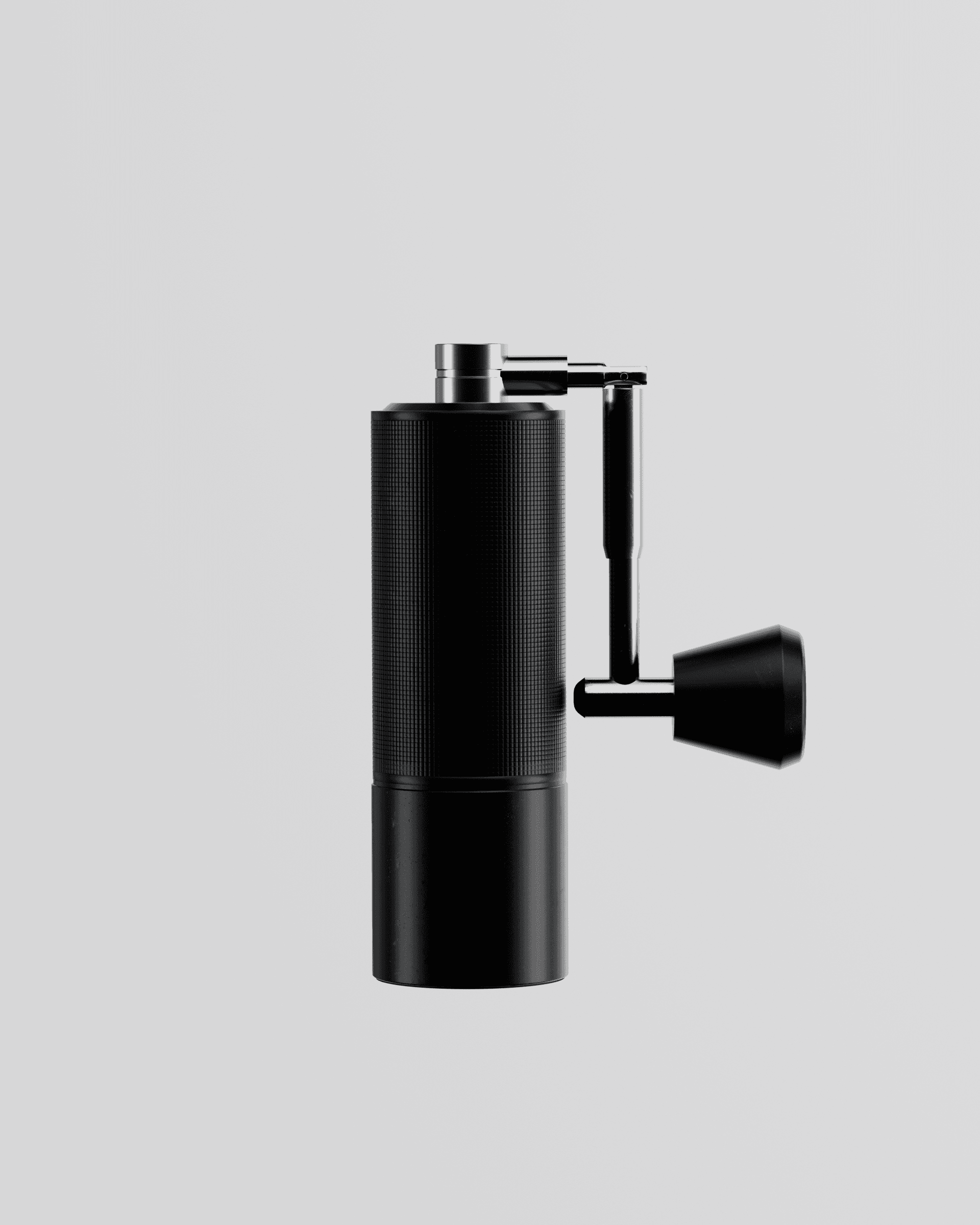Timemore is a brand I discovered when I first started my coffee journey. I’ve always liked the clean, industrial aesthetic in their design. For this project, I borrowed motifs like contrast lighting and motion blur to highlight the modern, minimal, precise, and tactile qualities I associate with their products. The standout feature of this grinder is its foldable handle, so I recreated that in Houdini by building a rigged version. While the rig worked, it wasn’t polished to the level I’d consider presentable. Still, I’ve shared the process and results below for anyone interested.
All processes were done in Houdini — modeling and rigging. Here’s the rig setup:
A lower-poly proxy was created for the simulation. Joints were made between:
Lid and body (Cone Twist)
Horizontal lever and vertical lever (Cone Twist)
The moving part that snaps into place when the handle is unfolded (Spring Constraint)
An initial velocity and angular velocity were applied to the entire geometry for the simulation. Finally, the transformations from the proxy were transferred onto the final higher-resolution version.
Challenges
The main challenge was that I couldn’t get the Cone Twist constraint to behave properly using the RBD Configure setup. I had to revert to the older method of manually creating joints and constraints (adding points and lines) and building the setup inside the DOP network. Another challenge was that, given the small scale of the object, using pure convex decomposition still caused geometry to clip through itself, especially when moving.









